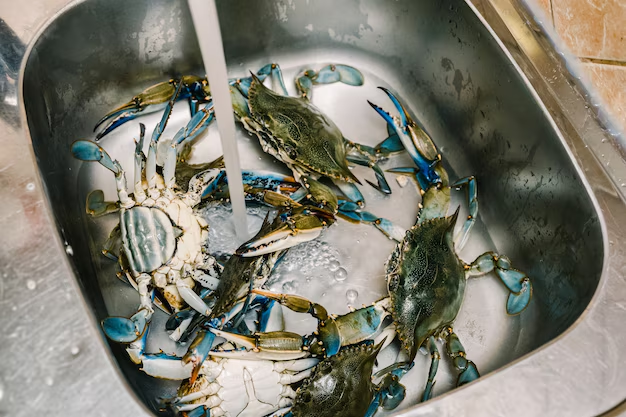How Long Can You Keep Live Lobsters in the Refrigerator? 🦞
For seafood enthusiasts, there's nothing quite like the flavor and texture of a freshly cooked lobster. But before you boil its shell to that perfect shade of red, you may find yourself wondering how long your live lobster can hang out in the refrigerator. Ensuring lobsters remain fresh isn't just a matter of taste—it's crucial for food safety too. Let’s dive into this intricate dance of crustacean care.
Understanding Lobster Storage Basics
The Nature of Lobsters
Lobsters are not just any seafood; they are unique creatures thriving in cold, salty waters. Their delicate nature necessitates careful handling, especially if you want to enjoy them at their finest. Whether you’ve bought them fresh off a boat, at a fish market, or ordered them online, keeping them in optimal condition is essential.
Why Storage Matters
The shelf life of a live lobster has direct implications for both taste and safety. Unlike many other types of seafood or meat, lobsters are best consumed as close to their catch as possible. Their natural enzymes start breaking down the flesh postmortem, and if not handled properly, they can spoil quickly.
Tips for Storing Live Lobsters in the Refrigerator
Lobster Storage Essentials 🦞
- 🧊 Chill it appropriately: Live lobsters should be stored in the coldest part of your fridge, usually at a temperature between 32°F and 40°F. Don't freeze them, as this is detrimental to their texture and taste.
- 🌊 Mimic their natural environment: While they can’t be kept in water (they will suffocate), a damp paper towel or seaweed should cover them to maintain moisture.
- 🗓️ Time is of the essence: Ideally, use live lobsters within 24 to 48 hours. Beyond this period, their vitality—and consequently their flavor—diminishes.
Day-to-Day Storage Practices
Day 1: Fresh Catch Arrival
Upon purchasing or receiving your live lobster, immediately place them in a well-ventilated container. Do not seal them in bags or containers without airflow, as lack of oxygen can be deadly.
Day 2: Check-up Time
On the second day, inspect your lobster for signs of life. A live lobster should be somewhat active or at least show reflexive movements when touched. A lack of response may indicate the lobster is near its expiration of freshness.
By Day 3: Decision Time
By the third day, if your lobster shows signs of sluggishness, it's best to cook it right away. Keeping it longer might compromise quality and safety.
Potential Issues and Solutions
Recognizing Spoilage
It's important that any seafood consumer can identify when it’s time to discard their lobster. Spoiled lobster typically exhibits an ammonia-like odor. If the scent is off-putting or if the shells look dull and dry, it may no longer be safe to consume.
Safe Cooking Practices
Always ensure that any lobster approaching its freshness limit is cooked thoroughly. Cooking kills most bacteria and making sure every part of the lobster reaches suitable temperatures is key to safety.
Transition to Cooking: Making the Most of Your Lobster
After taking the time to store your lobster safely, it’s time to enjoy it! Here are some popular and simple ways to prepare your lobster:
Classic Boiling
Boiling is a simple and traditional method that retains lobster's inherent flavor.
- 🔥 Heat prep: Start by boiling a large pot of salted water.
- ⏲️ Cooking time: Once the water reaches a rolling boil, submerge the lobsters. Cooking time varies by size but typically runs 8-12 minutes for a 1.5-pound lobster.
Steaming for Tenderness
For a slightly softer texture, steaming is an excellent alternative.
- 🚜 Steamer setup: Place a steaming rack in the bottom of a large pot.
- 🌬️ Steam mode: Add water, cover, and bring it to a boil before adding lobsters. Steam them for about 10-14 minutes.
Grilled Lobster
For a smoky flavor, consider grilling lobsters after boiling or steaming.
- 🔥 Preheat grill: Cut boiled lobsters in half and lightly coat them with olive oil.
- ⏲️ Time to char: Grill for 4-5 minutes per side until char marks appear.
Key Takeaways for Storing and Preparing Lobsters
To wrap up, here are some handy takeaway points to keep your lobster experience safe and delicious:
🔹 Timing is critical: The sooner you cook and eat your lobsters, the better the taste and quality.
🔹 Proper storage: Maintain a consistently cold temperature and ensure adequate ventilation.
🔹 Safety first: If in doubt about the lobster's freshness, it’s smarter to err on the side of caution.
🔹 Cooking versatility: Explore different cooking methods for added variety to the taste and presentation.
Conclusion: Enjoy Without Worry
Lobsters are a true delicacy, offering a rich flavor and tender texture when prepared correctly. By paying attention to their storage needs and acting quickly, you can ensure that your lobster remains a highlight of any culinary experience.
The steps are clear: store smart, act quickly, and savor the fruits of the sea responsibly. With this knowledge, enjoy your crustacean feast confidently and safely, creating memorable dining experiences for you and your guests.
